Maya museum exhibitions have traditionally been about blood baths involving either human sacrifice or dynastic conflict. The shows, real crowd-pleasers with titles such as The Blood of Kings, Lords of Creation and Cenote of Sacrifice, ran red with allusions to rivers of blood. Now there is a Maya exhibition that is more about the rivers than the blood: ‘Fiery Pool: The Maya and the Mythic Sea’ opens today at the Kimbell Art Museum.
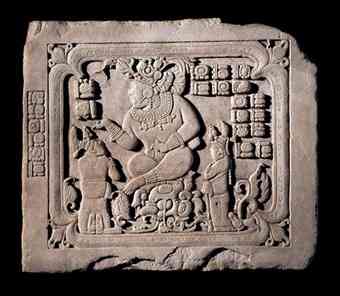 Although there is that allusion to fire, it is in reference to the dramatic reflections of the sun as it rises over the Caribbean and sets over the Gulf of Mexico. This exhibit is about the Maya's physical and spiritual relationship with water and covers a span of 2,000 years. from the first millennium B.C to the European invasion in the 1500s.
Although there is that allusion to fire, it is in reference to the dramatic reflections of the sun as it rises over the Caribbean and sets over the Gulf of Mexico. This exhibit is about the Maya's physical and spiritual relationship with water and covers a span of 2,000 years. from the first millennium B.C to the European invasion in the 1500s.
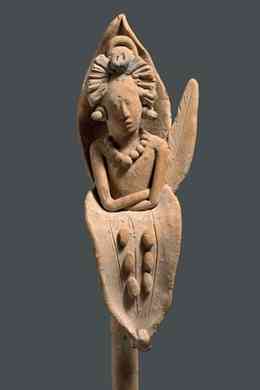 About 20 years ago, the Maya glyph for water was deciphered by pre-Colombian scholars and almost immediately a whole new meaning was given to a slew of Maya artifacts. This new scholarship is what is on display at the Kimbell, items that heretofore might have been misunderstood or misattributed. There are more than 90 works in the exhibit, some recently excavated and many never exhibited before in the United States.
About 20 years ago, the Maya glyph for water was deciphered by pre-Colombian scholars and almost immediately a whole new meaning was given to a slew of Maya artifacts. This new scholarship is what is on display at the Kimbell, items that heretofore might have been misunderstood or misattributed. There are more than 90 works in the exhibit, some recently excavated and many never exhibited before in the United States.
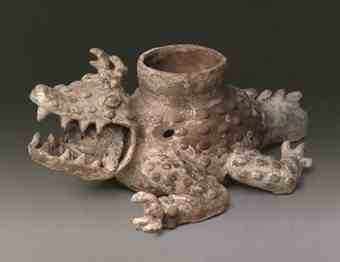 The exhibition has a great opener -- a cast of a temple facade that fills the Kimbell's barrel vault, depicting a god of rain and lightning at the top and a god of lakes, rivers and oceans in the middle. It provides a big welcome to the watery world of the Maya.
The exhibition has a great opener -- a cast of a temple facade that fills the Kimbell's barrel vault, depicting a god of rain and lightning at the top and a god of lakes, rivers and oceans in the middle. It provides a big welcome to the watery world of the Maya.
Deciphering the Mayas
The Kimbell does its usual lovely job of displaying the objects, from the giant temple cast to the tiniest barbed stingray tails used for blood-letting. There are many ceramics and stone works as well as a national treasure from Belize, a 10-pound jade head of the jester god that is so important to the nation's heritage that it is depicted on its money.
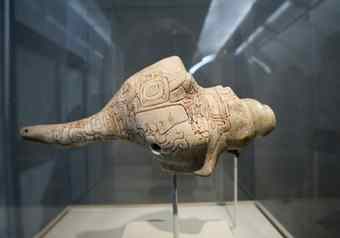 But there is awkwardness within the collection on display. Some pieces, such as the items excavated from a tomb in 2006, seem to have little connection to water. The curators from the Peabody Essex Museum in Salem, Mass., the organizers of the exhibition, wanted to include these newly discovered relics, and although some of the figurines are captivating in their variety and expression, their presence seems a little forced. The aqueous connection is almost vaporous at times, often because it is difficult to read the Maya iconography.
But there is awkwardness within the collection on display. Some pieces, such as the items excavated from a tomb in 2006, seem to have little connection to water. The curators from the Peabody Essex Museum in Salem, Mass., the organizers of the exhibition, wanted to include these newly discovered relics, and although some of the figurines are captivating in their variety and expression, their presence seems a little forced. The aqueous connection is almost vaporous at times, often because it is difficult to read the Maya iconography.
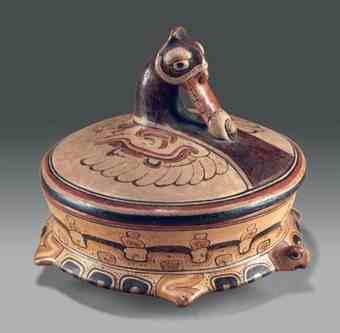 To aid our poor acuity for all things Maya, there are plenty of visual aids. Detailed drawings accompany pieces whose imagery is difficult to decipher or whose incising is worn with age. For a generation that desires multimedia learning there is a large circular screen of the ocean with creatures swimming across the surface. Touch them and their glyphs and the objects on which they appear pop on the screen.
To aid our poor acuity for all things Maya, there are plenty of visual aids. Detailed drawings accompany pieces whose imagery is difficult to decipher or whose incising is worn with age. For a generation that desires multimedia learning there is a large circular screen of the ocean with creatures swimming across the surface. Touch them and their glyphs and the objects on which they appear pop on the screen.
Stories in the carvings
The best pieces, or the ones that seem most remarkable, are the relief carvings. These large plaques, which were used to decorate walls, are spectacular in their intricacy and overall design.
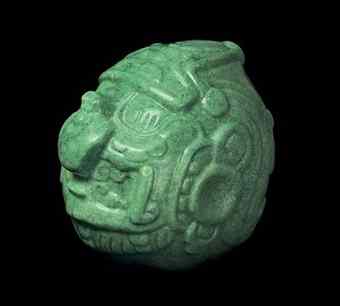 Two in particular should not be missed. One panel with 160 glyph blocks tells of a king's pilgrimage to the sea. Maya words are formed from combinations of nearly 200 signs, with each sign representing a full syllable -- so that a list of signs is called a syllabary, not an alphabet.
Two in particular should not be missed. One panel with 160 glyph blocks tells of a king's pilgrimage to the sea. Maya words are formed from combinations of nearly 200 signs, with each sign representing a full syllable -- so that a list of signs is called a syllabary, not an alphabet.
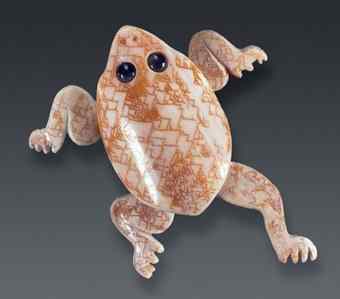 The panel reads from left to right two columns at a time. Another panel with few glyphs is a dramatic presentation of a ritualistic blood-letting.
The panel reads from left to right two columns at a time. Another panel with few glyphs is a dramatic presentation of a ritualistic blood-letting.
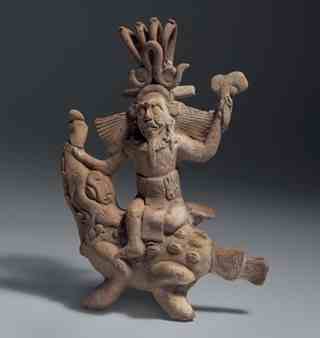 Commissioned by the chief wife of a king on the day of his accession to the throne, it shows her having pierced her tongue with a stingray spine. She allows the blood to be absorbed by bark paper, which is burned as an offering to the gods. Above her, emerging from the smoke, is Chahk the Rain God.
Commissioned by the chief wife of a king on the day of his accession to the throne, it shows her having pierced her tongue with a stingray spine. She allows the blood to be absorbed by bark paper, which is burned as an offering to the gods. Above her, emerging from the smoke, is Chahk the Rain God.
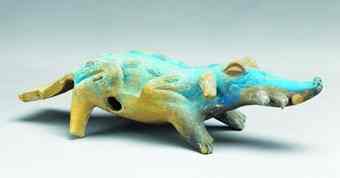 For those who like their Maya art bloodied, there is an area of the show with the grisly instruments of sacrificial bloodletting. There is a collection of stingray spines on display along with figurines that depict them being inserted into the genital tissue of men and the ear lobes or tongues of women.
For those who like their Maya art bloodied, there is an area of the show with the grisly instruments of sacrificial bloodletting. There is a collection of stingray spines on display along with figurines that depict them being inserted into the genital tissue of men and the ear lobes or tongues of women.
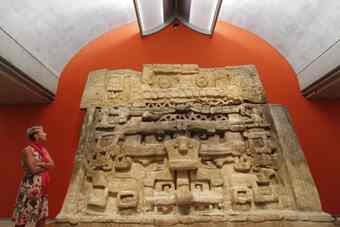 Many of the objects were retrieved from cenotes, open pools that connect with underground springs or aquifers. They were life-sustaining water sources as well as the sites of rituals and ceremonies related to cycles of rain and fertility, life, death and rebirth. Jars, pots, plates, bowls, incense burners, needles, jewelry, jade plaques and precious metals have been dredged from cenotes. Skeletons have also been found, but only in bottle-neck cenotes that end in a water-filled cavern, suggesting that they were used as burial grounds or sites of human sacrifice.
Many of the objects were retrieved from cenotes, open pools that connect with underground springs or aquifers. They were life-sustaining water sources as well as the sites of rituals and ceremonies related to cycles of rain and fertility, life, death and rebirth. Jars, pots, plates, bowls, incense burners, needles, jewelry, jade plaques and precious metals have been dredged from cenotes. Skeletons have also been found, but only in bottle-neck cenotes that end in a water-filled cavern, suggesting that they were used as burial grounds or sites of human sacrifice.
Author: Gaile Robinson | Source: Star Telegram [August 25, 2010]